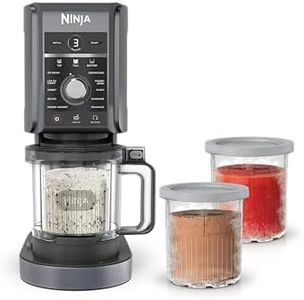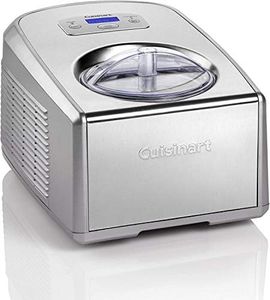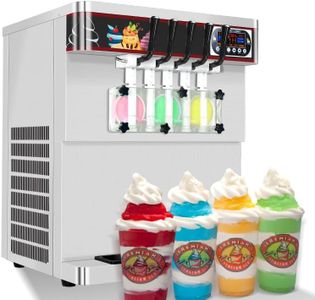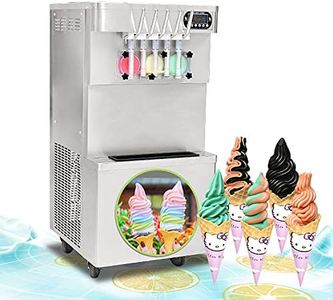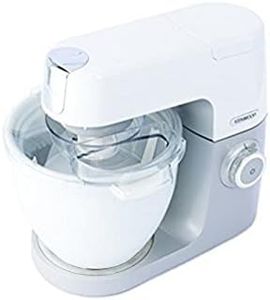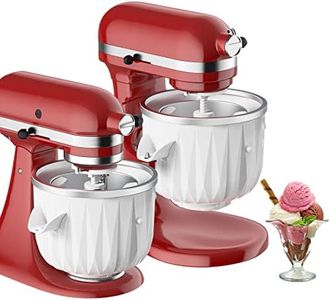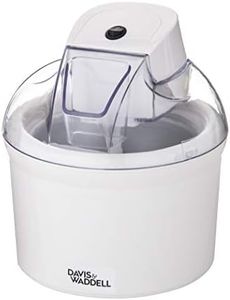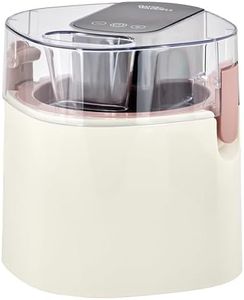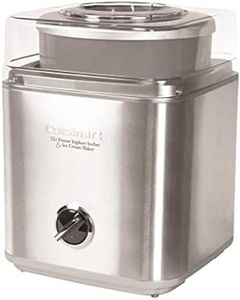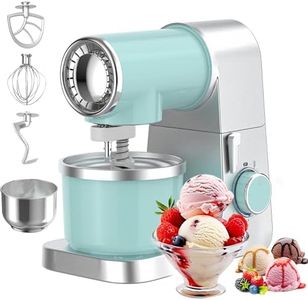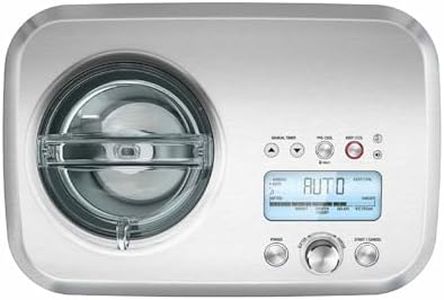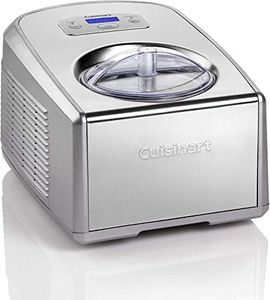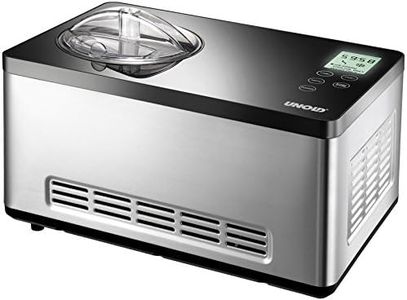We Use CookiesWe use cookies to enhance the security, performance,
functionality and for analytical and promotional activities. By continuing to browse this site you
are agreeing to our privacy policy
10 Best Ice Cream Maker Machines
From leading brands and best sellers available on the web.By clicking on a link to a third party's website, log data is shared with that third party.
Buying Guide for the Best Ice Cream Maker Machines
Choosing the right ice-cream maker can make your homemade frozen treats smoother, creamier, and a lot more fun to make. To find a good fit for you, consider how much ice cream you want to make at once, how hands-on you want to be, how quickly you'd like your dessert ready, and how much room you have for storage and clean-up. Understanding the key specifications of ice-cream makers will help you select one that gives you the results and experience you want.CapacityCapacity refers to how much ice cream you can make in a single batch. This usually ranges from about 0.5 to 2 quarts (or liters) in home machines. If you often make ice cream just for one or two people, a smaller machine is easier to store and clean. For families or if you like to entertain guests, a larger model saves time by making more dessert in one go. Consider how much you typically need at once to guide this choice.
Freezing MethodIce-cream makers use different methods to freeze your mixture: manual (with ice and salt), pre-freeze bowl, or built-in compressor. Manual models require you to add ice and salt and are very hands-on. Pre-freeze bowl machines need you to freeze a bowl for several hours before use, which is simple but requires you to plan ahead and space in your freezer. Compressor models chill themselves and let you make ice cream anytime, but they tend to be bulkier and heavier. If you value spontaneity and frequent use, compressor types work best. If you don’t mind planning, pre-freeze bowls are affordable and reliable.
Churning TimeThis spec shows how long the machine needs to turn your mixture into ice cream. It can range from about 20 minutes to over an hour depending on the type and recipe. Faster churning means you can enjoy your treat sooner, which is handy for parties or impatient eaters. If you don't mind waiting, longer churning models are just fine but often require more planning. Think about your patience level and when you tend to make ice cream.
Ease of CleaningEase of cleaning highlights how simple or tricky it is to take apart and clean the ice-cream maker after use. Some machines have non-stick surfaces and fewer parts, making cleanup a breeze. Others might have more nooks and crannies or more pieces to wash by hand. If you want a stress-free cleanup experience, look for machines with dishwasher-safe parts or simple construction. Your willingness or ability to clean up after making ice cream should help you find the right one.
Noise LevelNoise level refers to how loudly the machine operates during churning. Some machines are very quiet, while others make noise similar to a washing machine. If you prefer a peaceful kitchen or plan to make ice cream at night, a quieter unit is better. If the sound doesn’t bother you or you’ll only use it occasionally, noise level is less important.
Size and StorageThis spec relates to the physical size of the machine and how easy it is to store in your kitchen. Some ice-cream makers are compact and fit in most cabinets easily, while compressor models can be big and heavy. Before choosing, think about your available cupboard or counter space and whether you'll keep it out or put it away after each use. The size that fits comfortably in your kitchen without taking up too much space is usually the best pick for most homes.
